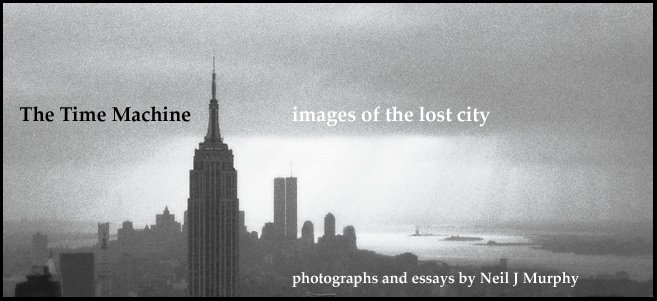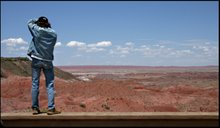 |
| February 1987 |
Everything is a time machine of sorts; anything you see or touch has links to other people, previous times.
Photographs are time machines of the ultimate sort: they preserve an image, exactly as it was, and allow us to experience the past from the comfort and security of the present.
My scanner is another kind of time machine: it enables me to explore these images in great detail, to bring to life again those scenes I was compelled to preserve so long ago.
I started shooting a 35mm camera in 1984. I shot some color print film, some slide film, but by the summer of 1985 I'd found my grail: Black and white. I carried the camera everywhere, and shot at least a roll a week. I was working in lower Manhattan, so I had no shortage of subject matter. I took an early train to the city, and made a habit of walking from Penn Station down to Canal Street, taking different deserted side streets, and wandering through the Village before anyone awoke. In late 1987 I moved to a shop on the west side, at 44 Street and 12 Avenue, and added the streets of Times Square to my portfolio.
So now I take these two time machines together, the film and the scanner, and travel back to the gray days of New York City in the 1980's: A land of filthy streets, dilapidated buildings, and a few husks of humanity, shuffling along in a bittersweet cloud of crack.
But this isn't meant to simply be a nostalgically depressing trip down memory lane. To contrast the time machine images, I'll be making images of the same scenes as they look today, so we can decide if the passing of a generation has been kind, cruel, or merely indifferent.



















